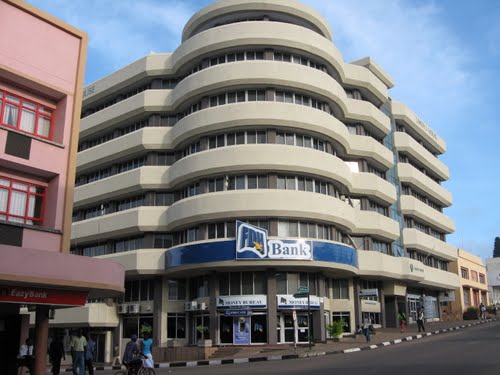Despite the deteriorating economy and shrinking business opportunities in the country, most banks have raked in huge profits, a development which has raised eyebrows among analysts and consumers.
However, the Bankers Association of Malawi (Bam) says there is nothing sinister about commercial banks’ profits as long as the institutions operate within their parameters and adhere to all regulations set by the central bank.
All the banks that released their annual financial results last week indicate that they have reaped considerable amounts of profit after tax.
Among the banks that have already released their reports are Standard Bank, which has achieved an after tax profit of K3.5 billion from K2.4 billion in 2010. National Bank of Malawi has made K3.5 billion up from K3.4 billion in 2010.
Others institutions are NBS Bank which made a K1.6 billion profit, up from K1.4 billion recorded in 2010 while FMB has registered a net profit of K2.01 billion for the year ended December 31, 2011 which is an increase from K1.8 billion made as at December 31 in 2010.
FDH Bank has just announced a massive 147 percent jump in their profitability, recording an after tax profit of K1 billion up from K408 million last year.
NBS Bank had K6.01 billion in interest income up from K4.6 billion in 2010, National Bank had K9.1 billion up from K7.9 billion with FMB interest income at K6.06 billion up from K5.1 billion.
Reacting to the banks’ profit, Consumers Association of Malawi (Cama) Executive Director John Kapito said there is need for proper regulation to check what he termed “abusive” interests and various charges that are levied on banking services.
“Most of the banking transactions are manipulative because from the consumer perspective, banks were supposed to be in the business of lending and keeping people’s money in terms of deposits.

“However, the banks are offering abusive interests and there are various charges on banking services that is why banking is probably the only profitable business in the country,” Kapito said.
He called on the Reserve Bank of Malawi (RBM) to come up with proper regulation that would check these interest rates variation in this sector.
Kapito said it would be fair for banks to minimise the wide gap that is there between the lending rate and savings rate so that depositors are also equally rewarded.
Financial market analyst Chikavu Nyirenda said most of the banks accounts show that they recorded their major earnings in interest income.
“Interest income is high in most of the banks that have released their results and in a way this shows that the banks are getting most of their earnings from the fees, charges and overall their lending rates are high compared with deposit rates,” said Nyirenda.
The difference between the lending rate and deposit rate is called an interest spread, which according to Nyirenda is huge in the country compared with the region.
“The average lending rate in the country is 18 percent while savings rate given to depositors is around 5 percent, which means the banks are highly profiteering from same depositors’ money, who are given the low interest,” Nyirenda said.
He said there is always a high interest rate for those individual customers as they are classified as highly risk, thereby attracting lending interest rate of plus 5 basis points above the base lending rate.
Another analyst said despite a massive rollout to the rural areas the service penetration is still low and that those accessing the service are doing it at a higher cost.
“It is well calculated because details would reveal that those under mobile and rural banking service have their own special interest rates which are higher considering the risk involved,” the analyst.
However, Bam president John Biziwick said Malawi cannot be compared with other countries in commercial banks’ operations because of different set of market requirements especially on the interest rate spread.
“Banks in other economies are able to offer lower lending rates compared to us because they are not eligible to provide liquidity reserve ratio which we deposit here to the Reserve Bank of Malawi at no interest.
“On the other hand, these interest rates are justified because there are fees which banks are supposed to pay in case of slow collection of loans.
“Malawi has a high risk in the lending business with unprecedented loan repayment defaults now these risks have to be factored in when offering the services,” said Biziwick.
On his part, RBM spokesperson Ralph Tseka said it would be retrogressive to regulate interest rates after the market was liberalised in the early 1990’s.
“What we have as a central bank is the requirement that every commercial bank must be transparent to its customers by disclosing to them all interest rates and fees that come with the banking services,” Tseka said.
Malawi has 12 banks and the latest to join the sector is CDH Investment Bank, which rolled out its services last week.
Only 17 percent of Malawi’s 13.1 million population (2009 census) has access to banking services.





No comments! Be the first commenter?